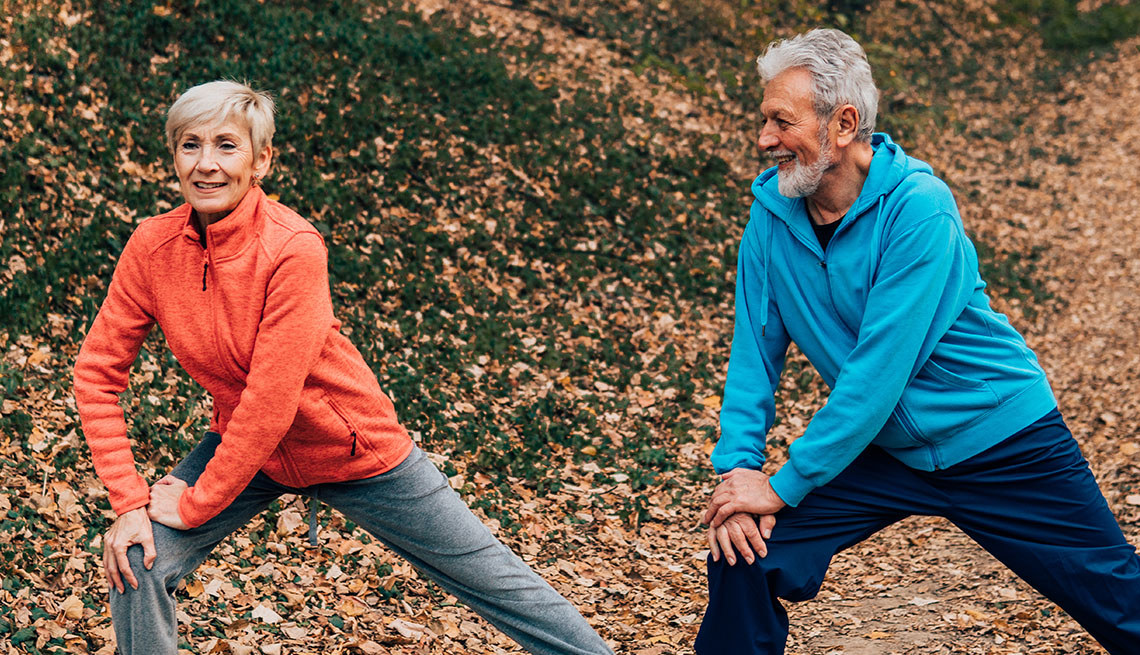Play all audios:
FOR EXPERT TIPS TO HELP FEEL YOUR BEST, GET AARP’S MONTHLY HEALTH NEWSLETTER. 4. PERFECT YOUR POSTURE. “People often slouch or get more stooped over as they get older,” Cardone says. This is
problematic because poor posture changes your body's center of gravity, placing added stress on your knees and hips. So make a point of standing tall, with your head in line with your
shoulders, your shoulders directly over your hips, your hips aligned with your knees, and your knees aligned with your feet. Doing “Pilates, yoga, tai chi and core-strengthening exercises
such as planks and back extensions can help improve your posture, prevent irritation under and around the kneecaps, and help you avoid falling,” Cardone adds. 5. CHOOSE THE RIGHT SHOES.
Wearing supportive, comfortable shoes promotes proper alignment of the joints in your lower extremities as you move, explains Barton Branam, M.D., an assistant professor of orthopaedic
surgery at the University of Cincinnati. For exercise, choose kicks that suit your activity — say, running shoes for running — and that are appropriate for your gait and foot (whether you
pronate or supinate, for example), Branam advises. Believe it or not, research suggests that postural abnormalities of the feet can contribute to knee osteoarthritis, which is why it's
important to wear shoes that help prevent inward or outward rolling of the feet during movement. If you're in the market for new exercise footwear, it's a good idea to get
professionally evaluated and fitted by someone at a top-notch running or sporting goods store, Branam suggests. When you're not exercising, avoid high heels, which increase the load
that's placed on your knees, Willy says. 6. LISTEN TO YOUR KNEE PAIN. If you develop pain and swelling in your knee, take a break from walking, running or any other high-impact activity
you're doing. Give your knee the RICE treatment — rest, ice, compression and elevation — and take an anti-inflammatory medication such as ibuprofen, Rue advises. “If it gets better on
its own, you can go back to what you were doing,” he says. If it doesn't respond in a week or two, have it looked at by a doctor. In the meantime, you can continue to exercise by doing
a gentle activity, including swimming, aqua aerobics or bicycling, Willy says, so that you don't lose any of the fitness you've been building. _Editor's note: This article was
originally published on September 20, 2019. It has been updated with the AARP Top Tips video._

